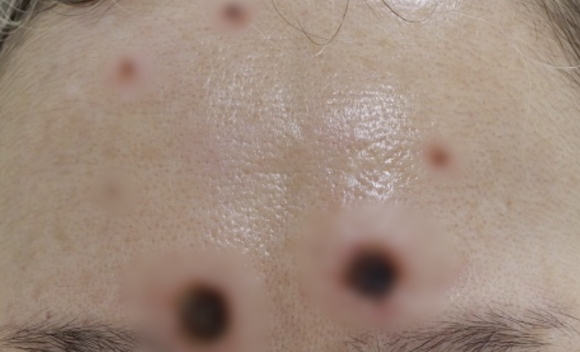
Local authorities urged caution as many cases of skin necrosis occurred in Japan after purchasing a so-called “molecular removing cream” from the Chinese direct purchase site “Ali Express.”
On the 13th, the National Center for Life (NCAC) in Japan recently announced that five cases of chemical lacerations were reported from applying the “point ointment” cream advertised on social media (SNS) to the face, and four of them suffered serious skin damage.
A woman in her 70s applied the cream on her forehead in May, causing her skin to change color and part necrosis. The woman left the cream on the mole for about 20 minutes following the product’s usage, but her skin began to turn red and swollen.
Another consumer applied the cream on a face mole in June and immediately felt a burning pain and suffered burns on her skin. In July, a woman in her 50s was burned after applying the cream on a cotton swab and rubbing it hard on stains and spots around her nose. The product in question is a light-colored cream that advertises on social media that applying it to the skin removes spots, warts, and seaweeds.

NCAC recovered the cream and examined it, and it was found to be strongly alkaline with a pH of 14. Water is neutral at a pH of 7, but the cream is highly corrosive at the level of lye.
Calcium oxide and sodium hydroxide were the main ingredients of the cream. Calcium oxide is a strong alkaline substance that can damage the skin and mucous membranes and can be life-threatening just by inhaling it. It is usually used in lime fertilizers, desiccants, cement, bleach, etc. Sodium hydroxide is a representative strongly basic substance that requires attention.
NCAC said, “This cream can cause serious damage to the skin, and if it enters the eye, it can cause serious eye damage,” adding, “We should refrain from purchasing drugs or cosmetics that have not been identified on SNS.”
SOPHIA KIM
US ASIA JOURNAL



